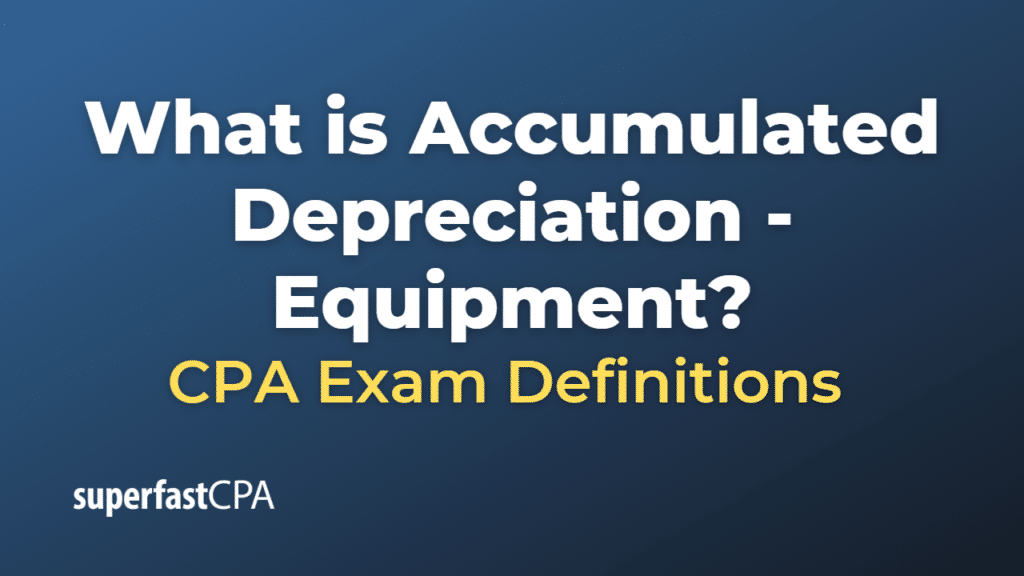Accumulated Depreciation – Equipment
Accumulated depreciation – equipment refers to the total amount of depreciation expense that has been recorded for equipment since it was acquired by a company. Equipment, like other tangible assets, loses value over time due to wear and tear, obsolescence, or other factors. Depreciation is the process of allocating the cost of equipment over its useful life, and accumulated depreciation reflects the total depreciation recorded for that equipment over time.
On a company’s balance sheet, accumulated depreciation – equipment is listed as a contra asset account, which reduces the value of the corresponding equipment asset. As depreciation expenses are recorded over time, the accumulated depreciation account increases, reflecting the reduction in the equipment’s value.
For example, suppose a company purchases a piece of equipment for $50,000 with an estimated useful life of 5 years and a salvage value of $5,000. Using the straight-line depreciation method, the annual depreciation expense would be ($50,000 – $5,000) / 5 years = $9,000 per year. At the end of the first year, the accumulated depreciation – equipment would be $9,000, and after two years, it would increase to $18,000 ($9,000 from the first year + $9,000 from the second year).
The balance sheet would list the equipment’s original cost of $50,000 as an asset, while the accumulated depreciation of $18,000 would be listed as a contra asset, reducing the net book value of the equipment to $32,000 ($50,000 – $18,000). As the equipment continues to be used and depreciated, the accumulated depreciation account will increase, further reducing the net book value of the asset.
Example of Accumulated Depreciation – Equipment
Sure, here’s an example of accumulated depreciation for equipment:
XYZ Corporation purchases a piece of machinery for their production facility on January 1st, 20X1. The machinery costs $100,000, has an estimated useful life of 10 years, and a salvage value of $10,000. XYZ Corporation uses the straight-line depreciation method.
Annual Depreciation Expense = (Cost – Salvage Value) / Useful Life Annual Depreciation Expense = ($100,000 – $10,000) / 10 years = $9,000 per year
After 3 years, the accumulated depreciation for the equipment would be calculated as follows:
Accumulated Depreciation – Equipment (after 3 years) = Annual Depreciation Expense * Number of Years Accumulated Depreciation – Equipment (after 3 years) = $9,000 * 3 = $27,000
So, at the end of the third year, the accumulated depreciation – equipment for the machinery would be $27,000. On the balance sheet, the equipment’s original cost of $100,000 would be listed as an asset, and the accumulated depreciation of $27,000 would be listed as a contra asset. The net book value of the machinery on the balance sheet would be:
Net Book Value = Cost – Accumulated Depreciation Net Book Value = $100,000 – $27,000 = $73,000
This means that after three years, the net book value of the machinery is $73,000, reflecting the decrease in value due to accumulated depreciation.













